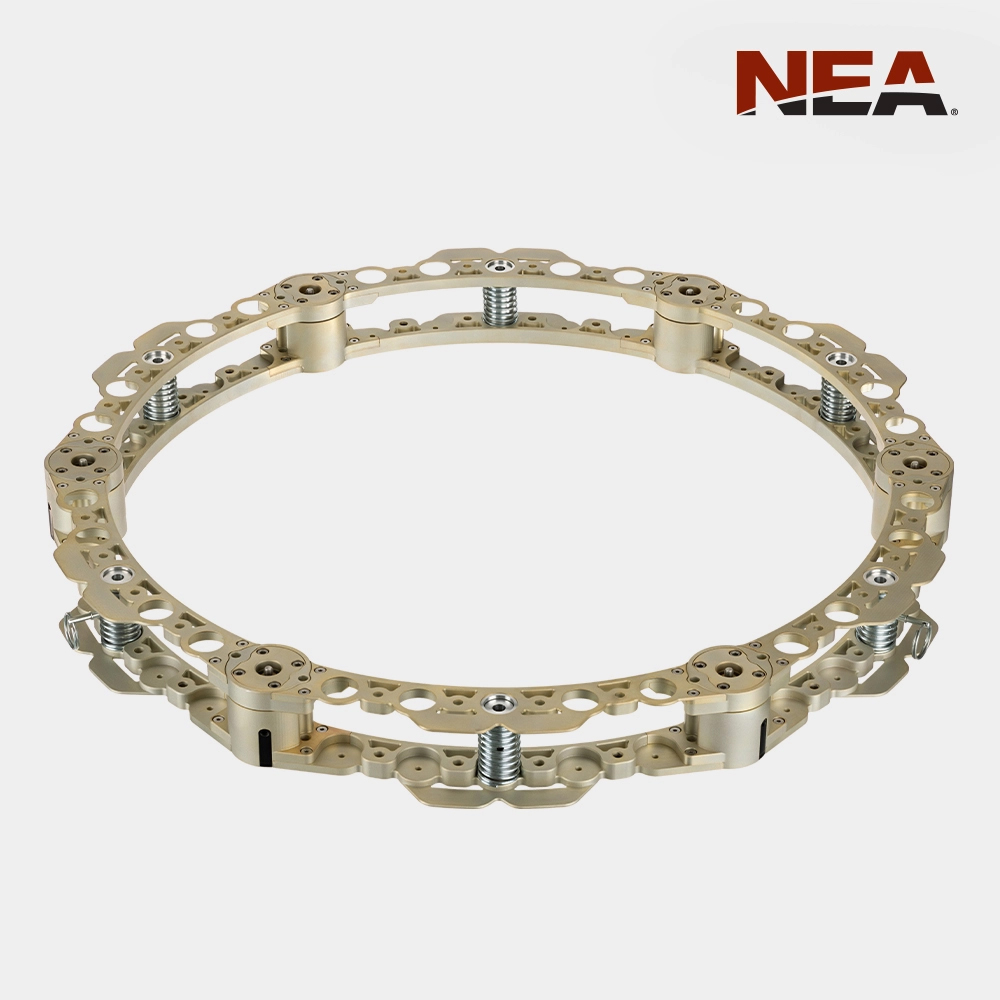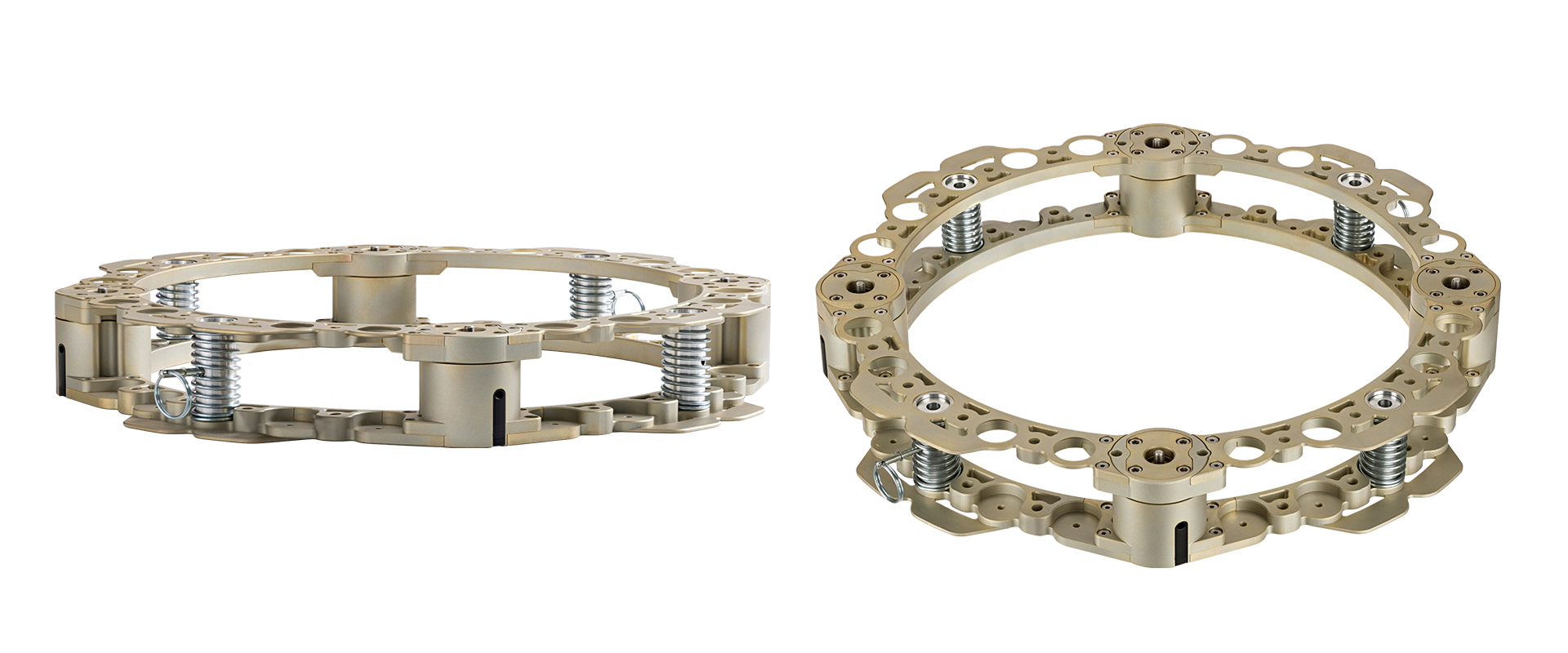

Overview
For nearly 60 years EBAD has supplied launch vehicles and the space market hardware to support initiation and separation. The NEA® Payload Release Ring utilizes the flight-proven technology of the NEA mechanism product line to release payloads from a launch vehicle.
Principle of Operation
The NEA® Payload Release Ring (PRR) consists of four (4) NEA release mechanisms, two ring halves, and separation springs with corresponding holders. The 4 NEA’s are utilized to compress the separation springs and hold the two ring halves together. The PRR is then attached to the payload. The PRR, and attached payload, are mounted to the launch vehicle utilizing 24 fasteners.
The NEA® Payload Release Ring (PRR) is electrically connected to the launch vehicle via redundant connectors. The connector will be connected to each of the NEA release mechanisms. An additional connector is provided in order to provide communication between the launch vehicle and the payload.
The payload is released when the launch vehicle applies current to the PRR connector. The NEA® Payload Release Ring connector distributes the current to the four NEA release mechanisms, which actuate and allow the separation springs to separate the payload from the launch vehicle.
Applications
Launch vehicle payload release
- Ø15″ circular port with 1/4″ fasteners
- Other port sizes can be developed
Key Features
- Low release shock
- Redundant actuation circuit
- Payloads up to 250 kg1
- Low mass (see Specifications Table)
- High stiffness
- Can be operated with standard launch vehicle circuitry
- Launch vehicle to payload connector interface
- No debris generation
- Meets standard tip off requirements
- Customizable separation velocity (4–20 push off springs)
- Range safety friendly
- Space-rated materials
- Field refurbishment
1 Maximum allowable payload mass is dependent on the Center of Gravity of the payload. A 250 kg mass is acceptable with a CoG of 13″ from the launch vehicle or less.


Technical Specifications
| Model | Payload Capability | Shock Output2 | Release Time3 | Total Mass | Fly Away Mass | Temperature Range | Spring Energy, J | # of Springs | Data Sheet |
|---|---|---|---|---|---|---|---|---|---|
| PRR‑8 | 70 kg1 | <300 g’s | 40 ms | 4.55 lb (2.06 kg) | 1.5 lb (0.68 kg) | -50°C to +110°C | 2.8 | 4 to 8 | Download PDF |
| PRR‑15 | 250 kg1 | 300 g’s | 40 ms | 6.35 lb (2.88 kg) | 2.2 lb (1 kg) | -50°C to +110°C | 2.8 | 4 to 20 | Download PDF |
| PRR‑24 | 500 kg1 | <300 g’s | <40 ms | 10.58 lb (4.8 kg) | 3.5 lb (1.6 kg) | -90°C to +135°C | 3.57 | 4 to 30 | Download PDF |
Notes:
1 Maximum allowable payload mass is dependent on the Center of Gravity of the payload. A 250 kg mass is acceptable with a CoG of 13″ from the launch vehicle or less
2 Indicates payload side. Shock output was measured by mounting the ESPA ring launch vehicle interface to an aluminum 6061 0.75” x 24” x 24”” test fixture, and to a secondary plate of the same characteristics on the payload interface
3 Release time is based on the current supplied, the stated time is based on the SpaceX electrical interface, capable of simultaneously applying 5A to 4 separate lines
Contact EBAD for additional technical data

